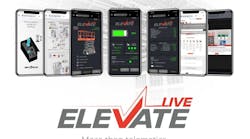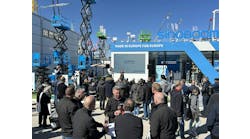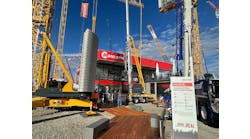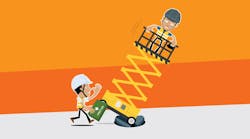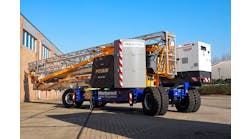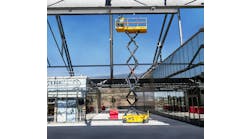Interview with Skyjack’s Malcolm Early: Updated Navigation
Malcolm Early, vice president of marketing, Skyjack, talks about Skyjack’s mobile-first telematics system, enhanced data, and the benefits of AI.
RER: What have been the most important achievements in your telematics systems in the past year?
Early: This year marked the launch of our updated telematics system Elevate 2.0. Originally launched in 2018, the mobile-first solution aimed to provide operators access to critical machine information such as the machine’s current state of health, pre-use inspection guides, and familiarization tools via a QR code. The straightforward access to this information was designed to empower both operators and rental companies. The updated navigation in Elevate 2.0 allows easy access to additional insight and features, including live metrics such as battery details, engine faults, and controller alarms.
These updates provide clear guidance to operators; encouraging safe operation and saving rental houses time spent answering questions. Furthermore, the insight into each machine allows for straightforward, efficient fleet management.
What have been the most important advancements in capabilities, enabling rental companies to improve efficiencies?
Early: Our goal with Elevate has always been to empower rental companies and our update allows us to do just that. In addition to providing operators with easy-to-access operation materials, Elevate gives rental companies an enhanced look at their machines to make strategic and informed decisions regarding fleet management.
With Elevate, electronically powered machines can see a live battery percentage, extensive charge information, and suggested actions for next steps. Controller alarm data also presents any issues with corresponding codes and timestamps, battery voltage, and total hours of battery usage.
Engine-powered machines can see issues complete with codes and timestamps, fuel amounts and fuel consumption data, total hours and battery voltage. Tracking of overload and tilt alarm triggering can also be tracked on telescopic and articulating booms.
How will telematics advance in the next few years? What are customers expecting in the next level of telematics?
Early: The degree and depth that rental companies use all the power of telematics varies. At the base hours and location, but for those that appreciate the power of telematics there is a world of data to explore. The key is to ensure that real operational issues are explored, and, in that way, really measurable benefits are possible. Helping rental companies move along that continuum is key and next stages will see software develop to allow the development of “apps” that address real operational issues.
We expect that telematics will continue to advance in the coming years. In terms of customer expectations, customers will likely continue to appreciate insights that enhance their ability to make informed, strategic decisions for their equipment. With that in mind, enhanced insight into efficient and environmentally friendly operation, machine health, operation data, and maintenance suggestions will continue to develop through telematics. The way in which that information is presented and used will also continue to be developed and optimized.
I’m sure you keep your eye on telematics development in other industries. What are some of the developments or trends in telematics that you’ve noticed in other industries that you admire, whether or not they are relevant to the rental industry?
Early: Telematics really started outside of rental in the likes of the transportation industry and indeed for telematics to really provide benefits for rental, one needs to focus on relative benefits. For example, speed is important for transportation, but in rental and in off-highway situations it is less critical where machines travel in the 5 to 10 kmph range. This means data acquisition and sampling rates do not need to be as complicated and as costly as other industries.
In looking at other industries we have to bear these things in mind. While we are not saying that we would not learn from other industries we probably see more “runway” in rental operations defining their needs more closely. Advances in software are coming that will enable rental operations to customize their data collection based on their needs and that is a rich vein for the industry to tap into.
There is a lot of discussion about artificial intelligence these days. Is AI relevant to the world of telematics in relation to the rental industry?
Early: Things like goal optimization, pattern recognition and predictive analytics can very much be applied to telematics data and in that sense telematics role is data gathering, while AI techniques allow us to make sense of that data. In rental the places where these techniques need to reflect key operational problems and the rental industry is the master of its own destiny.
